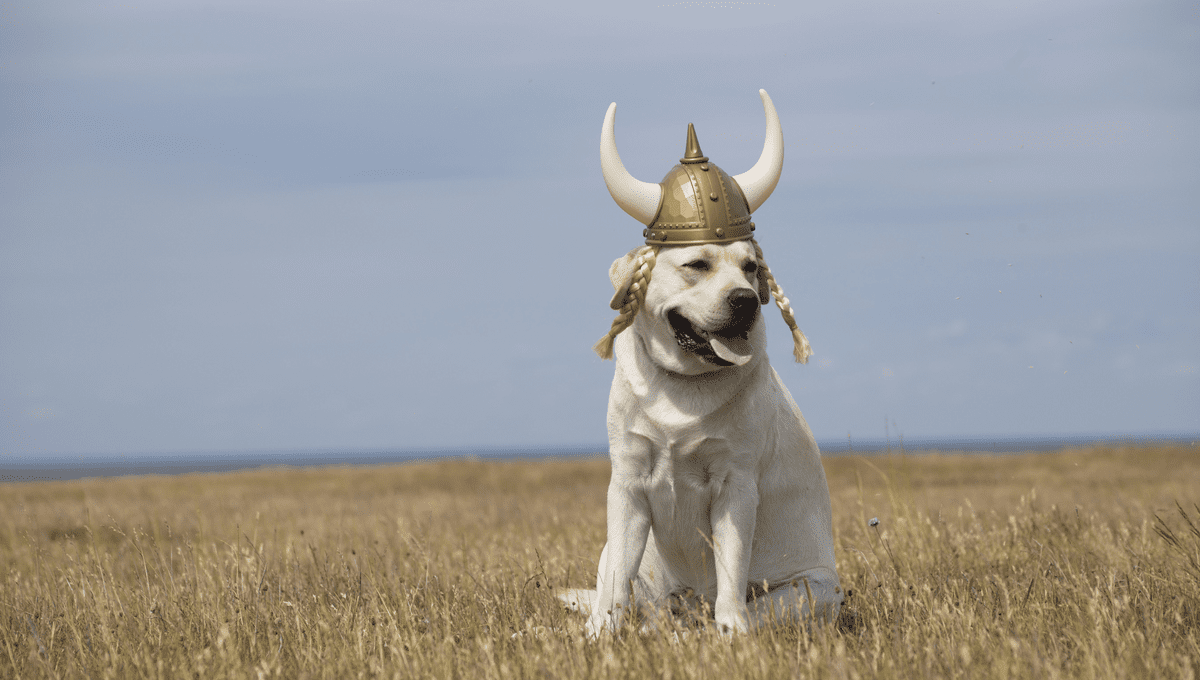
For Brits in the eighth and early ninth centuries, Viking raids were just part of life. There you’d be, hoeing your turnips, when along comes a rampaging horde to ransack the local monastery and steal the king’s daughter. It usually didn’t last long – they were smash and grabs rather than invasions. That is, until about 865 CE, when a new Viking Great Army landed in East Anglia… and stayed.
For the next decade, this army moved westwards across England, fighting and overpowering the Anglo-Saxon kingdoms that stood in their way. By 873 CE, they had got as far as Repton, in Derbyshire – and it looked like they planned on sticking around.
As anybody would when they moved across the ocean looking for a new life, these Viking invaders brought along their pets. That’s according to a new analysis of a barrow cemetery at Heath Wood, Derbyshire – the only known Viking cremation cemetery in the British Isles, dating back to exactly this period of overwintering in the heart of England.
“This research presents the very first direct evidence that not only people made their way across the North Sea in the ninth century, but also animals,” the researchers write in their new paper, published today. Sampling small fragments from the site, the researchers identified the cremated remains of three humans (two adults and a child) and three animals (a horse, a dog, and what they believe to be a pig).
How do we know these animals came over to Britain with their humans? It all comes down to an element called strontium: a trace metal present in rocks, soil, water, plants, and animals. The team analyzed the levels of this element in each of the remains and compared it to the surrounding area – if they were similar, then the remains likely came from a local, and if they were different, the team was probably looking at a Viking.
Not only did all the animals’ strontium levels stand out as different from the local Derbyshire levels, but so too did one of the adult humans’ – suggesting not only that the animals were imported from Norway or Sweden, but also that the so-called “Great Viking Army” actually consisted of people from many different populations.
As interesting as that is, it’s the animals that are truly remarkable. After all, it’s not easy to get a horse onto a boat, and it’s not like England didn’t have horses of its own. So why did the Vikings bring their own?
Perhaps the answer is simply sentimentality. “Given the difficulty of transporting horses across the North Sea in open boats one might assume that the army generally seized its horses in England,” the researchers write. “However, it is not impossible that its leaders brought their personal mounts with them […] it is less surprising that a Viking leader would also bring their prized hunting dog, [a] key status symbol […] and the pig might have been intended as initial livestock.”
If that’s the case, however, the Vikings would soon face tragedy. Not in warfare – in fact, Viking rule in England went from strength to strength, and by the end of the 9th century, they ruled a vast swathe of the country known as the Danelaw. However, their trusty steeds and hounds were sadly not long for the world, dying (or perhaps being sacrificed) soon after their arrival in the new country – and it seems their human owners felt their loss profoundly.
“At Heath Wood, we observe a rite strongly symbolic in character,” the authors write. “Through the burial rite, and the inclusion of ‘companions’ from Scandinavia, the mounds at Heath Wood provide a direct link, a proxy, to the ‘homelands’ of those buried here.”
The research can be found in the journal PLOS ONE.
Source Link: Viking Invaders Came To Britain With Doggos And Horsies